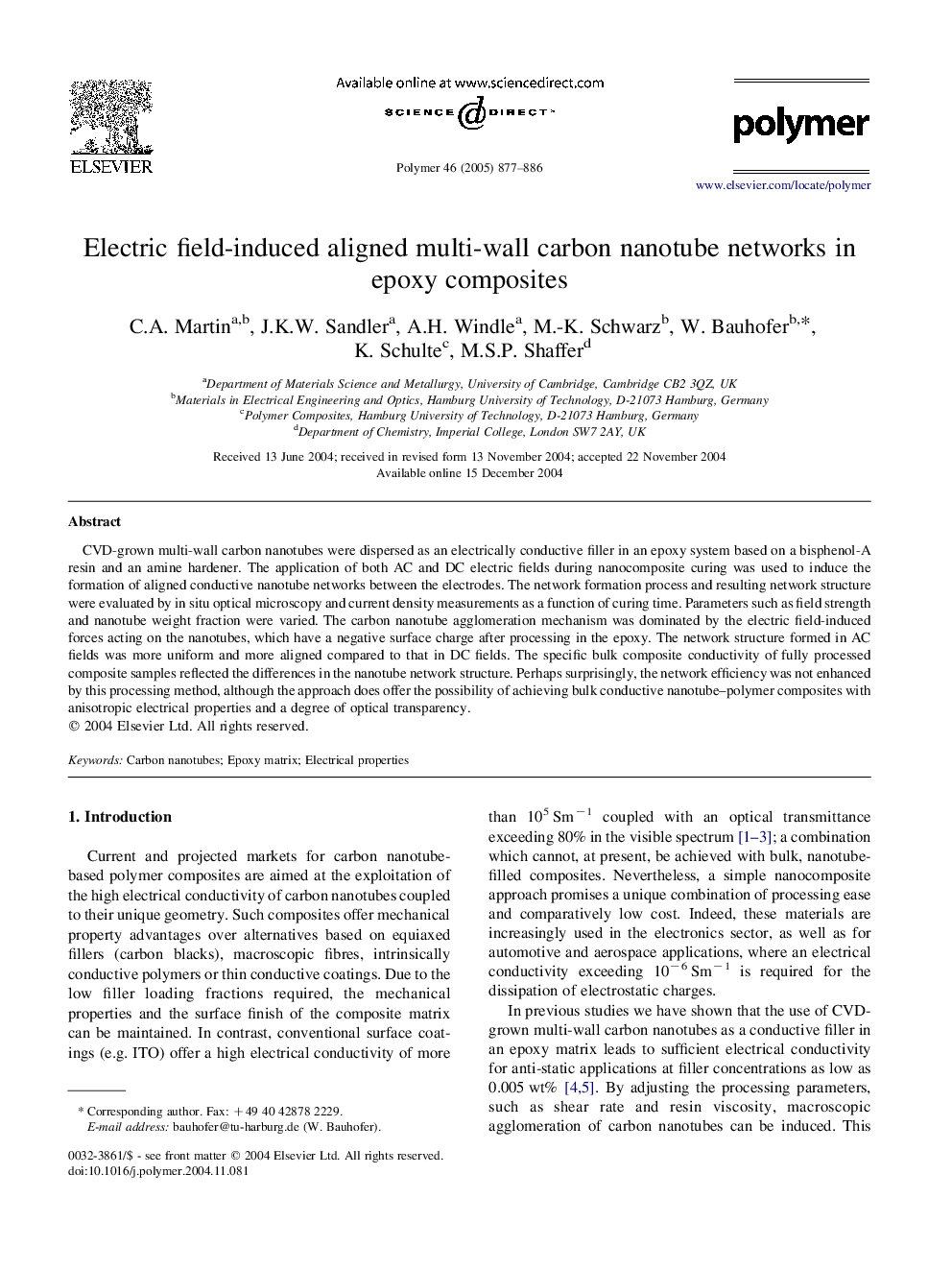| Article ID | Journal | Published Year | Pages | File Type |
|---|---|---|---|---|
| 9559332 | Polymer | 2005 | 10 Pages |
Abstract
CVD-grown multi-wall carbon nanotubes were dispersed as an electrically conductive filler in an epoxy system based on a bisphenol-A resin and an amine hardener. The application of both AC and DC electric fields during nanocomposite curing was used to induce the formation of aligned conductive nanotube networks between the electrodes. The network formation process and resulting network structure were evaluated by in situ optical microscopy and current density measurements as a function of curing time. Parameters such as field strength and nanotube weight fraction were varied. The carbon nanotube agglomeration mechanism was dominated by the electric field-induced forces acting on the nanotubes, which have a negative surface charge after processing in the epoxy. The network structure formed in AC fields was more uniform and more aligned compared to that in DC fields. The specific bulk composite conductivity of fully processed composite samples reflected the differences in the nanotube network structure. Perhaps surprisingly, the network efficiency was not enhanced by this processing method, although the approach does offer the possibility of achieving bulk conductive nanotube-polymer composites with anisotropic electrical properties and a degree of optical transparency.
Related Topics
Physical Sciences and Engineering
Chemistry
Organic Chemistry
Authors
C.A. Martin, J.K.W. Sandler, A.H. Windle, M.-K. Schwarz, W. Bauhofer, K. Schulte, M.S.P. Shaffer,
